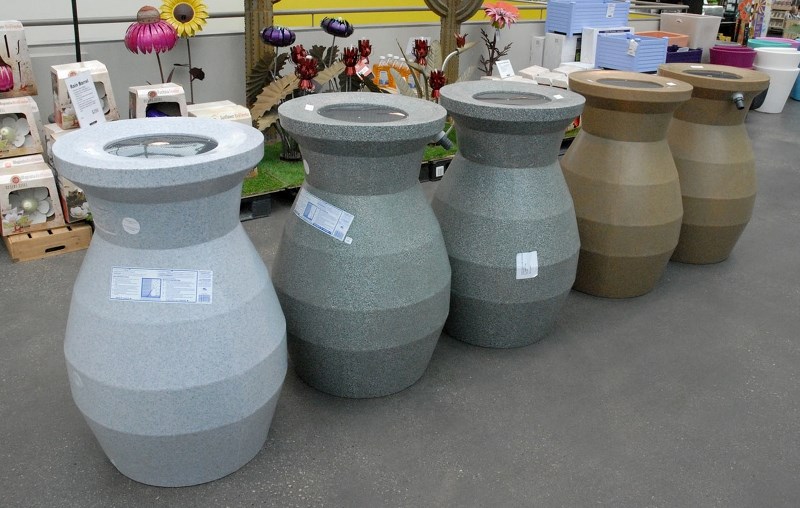St. Albert and the capital region (in fact, all of Alberta and the Prairies) are on the verge of a possible drought after the driest spring in 50 years.
Despite relief from a few showers this week, St. Albert had only received 26 mm of rain since April 1, far from the nearly 100 mm that is the norm. All the more reason then, to revisit the rain barrel, a water and money-saving container that catches rain water from roof downspouts (any little bit of rain adds up quickly, say proponents), providing an easy way to conserve water and protect the environment.
Since 2006, the city has offered rain barrels for sale to residents at cost (about $50), most recently through LBH Building Centre. The 208-litre (55 gallon) neutral-coloured, plastic barrels are simple, low-tech and effective ways to gather rainwater for use in watering garden plants, trees, shrubs and lawns. The barrels often sell out quickly when they come on offer each spring, though only an estimated 20 per cent of St. Albert households have one.
“We should all do our own bit. I regularly see yards where the water isn’t going where it should, with downspouts aimed onto driveways or sloping toward the house. A rain barrel helps collect and redirect the water,” said Jim Hole, co-owner of Holes Greenhouses and Gardens.
“When I grew up, we’d go to the river to get water – we spent a lot of time and effort pumping up water for the plants. There’s a sense of waste when you don’t catch the free water – even if you collect just five per cent of the water you use in the yard, it’s better than nothing.”
Hole said this year’s dry and warm conditions are putting added stress on plants and gardens, so any bit of collected water is helpful. While he remembers the metal barrels of old that he and his brother used to play with as children, today’s rain barrels are a world of difference, he said.
“There are high-quality, UV stable plastic models available today, with quality brass spigots at the bottom, overflow hoses on top, and mosquito-proof, kid-proof lids.”
While only a fraction of homeowners have a rain barrel, those that do often have more than one.
“Rain barrels are probably the best gardening thing I’ve ever done,” tweeted rain barrel fan John Richardson, who reports having five barrels around all the downspouts on his property.
According to the city, there are many reasons to use a rain barrel: free water (which saves on the monthly water bill), a decreased amount of drinkable, treated water used for outdoor watering, reduced demand on water treatment facilities, and an easy way to conserve water (a precious natural resource) and protect the environment. Also, rainwater is soft and non-chlorinated, which can stimulate plant growth and make soil healthier.
The city recommends keeping a lid on the barrel at all times to keep out insects, pets and wildlife. Adding a spoon of oil or dish soap to the barrel every 10 days or so will also prevent mosquito larvae from hatching.
For tips on setting up a suitable site for the rain barrel (elevating it to create positive drainage, etc) and year-round maintenance suggestions, visit stalbert.ca/rain-barrel-program or call 780-459-1500.
OUTDOOR WATER SAVING TIPS
The city’s website, stalbert.ca offers water saving tips for lawn care, trees, landscaping, including:
• Water your lawn once a week for no more than one hour (equals one inch of water).
• Skip a week of watering if it rains – brownish grass will green up after a rainfall.
• Water during the coolest part of the day (early morning or late evening) to avoid water loss from evaporation.
• Use a soaker hose or drip irrigation system rather than a sprinkler. It’s a more effective way to get water directly to the root systems.
• Add compost and mulch for water retention, and consider landscaping with drought-tolerant and native plants, which require less maintenance and water.




